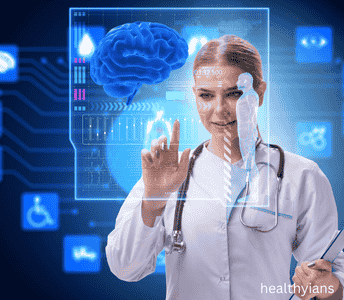The world of medicine has changed quickly over the last few years. One of the biggest shifts is the rise of telemedicine, where doctors and patients connect through phones, tablets, and computers. Now, with new technology like artificial intelligence (AI), telemedicine is starting to get even smarter.
This article will cover point-by-point what lies ahead for The Future of AI in Telemedicine and how it’s already shaping medical care.
Table of Contents
1. Smarter Virtual Consultations
AI is making virtual doctor visits more helpful and accurate. It can listen to patient symptoms, suggest possible causes, and even recommend follow-up questions for doctors to ask. These tools support healthcare workers by helping them focus on what matters most.
2. Faster Diagnoses
AI programs are being used to study medical images like X-rays, MRIs, and CT scans. These tools can spot tiny changes in the images that people might miss. This means doctors can catch problems like cancer or heart disease earlier, giving people a better chance at recovery.
3. Patient Monitoring From Home
Smart devices like wearables, fitness trackers, and smartwatches can track a person’s heart rate, sleep, blood pressure, and more. AI studies this data to watch for unusual signs. If something looks concerning, a doctor can be alerted, and the patient can get help before things get worse.
4. Predicting Health Problems
AI can study patterns in a person’s health data and predict possible problems before they happen. For example, it might notice changes in heart rhythm or blood sugar levels and send an early warning. This makes it easier to prevent serious illnesses before they start.
5. Easier Access to Medical Help
Many people live in places where it’s hard to visit a doctor in person. AI chatbots and virtual assistants can answer simple health questions, schedule appointments, and give advice on basic care. This makes healthcare more available to people in remote or busy areas.
6. More Accurate Treatment Plans
AI can review patient records and medical research to suggest treatment options that fit a person’s unique needs. This helps doctors choose the safest and most effective care for each individual, reducing the chance of mistakes or bad reactions.
7. Supporting Mental Health Care
Virtual therapy sessions have become more common. AI can help by tracking how people respond to treatment and adjusting the approach when needed. Some programs can even check for warning signs of depression or anxiety by analyzing how someone speaks or writes messages.
8. Data Safety and Privacy
As AI handles more personal health information, protecting this data is a top priority. Systems are being built to keep patient records safe and follow strict rules about privacy. Developers are working closely with healthcare providers to keep information secure.
9. Virtual Training for Medical Staff
AI-powered simulations and training tools help healthcare workers practice diagnosing and treating health problems without real-life risks. These tools can also teach new skills or keep doctors up to date with the latest medical findings.
10. AI-Powered Medical Records
Managing medical records has always been a slow, paper-heavy job. AI is now being used to sort, organize, and update these files more quickly. This means less paperwork for doctors and faster, more organized care for patients.
11. Connecting Different Healthcare Systems
AI can help link hospitals, clinics, and other healthcare providers so patient information is shared safely. This makes it easier to give people the right care at the right time, even if they move or travel.
12. Smarter Drug Development
Creating new medicines takes years, but AI is speeding up this process. By studying how different chemicals interact with the body, AI can suggest which drugs might work best for a disease, cutting down on research time.
13. AI in Emergency Care
During emergencies, quick decisions save lives. AI tools are being built to help paramedics and emergency doctors make faster choices about treatment by offering data-based suggestions and predicting risks on the spot.
14. AI for Elderly Care
As people live longer, AI is stepping in to help care for older adults. AI programs can track health changes, remind people to take medication, and connect them with doctors or family members if something seems wrong.
15. Future Challenges and What’s Next
Even though AI is bringing big improvements, there are still challenges ahead. These include keeping data safe, avoiding mistakes, and making sure AI is fair to everyone. As technology grows, doctors, patients, and developers will need to work together to solve these problems.
Frequently Asked Questions
Q1: What is telemedicine?
Telemedicine is a way for doctors and patients to connect using phones, computers, and video calls instead of meeting in person.
Q2: How does AI help in telemedicine?
AI helps by checking medical images, predicting health risks, managing records, and assisting in online consultations.
Q3: Can AI diagnose diseases?
Yes, AI can support doctors by studying images and data to suggest possible health issues, though final decisions are still made by human doctors.
Q4: Is my health information safe when AI is involved?
Healthcare systems work hard to protect patient data by following strict rules and using secure systems.
Q5: How does AI support mental health?
AI can track symptoms, suggest treatment changes, and detect warning signs through voice patterns and written messages.
Q6: Will AI replace doctors?
No. AI is a tool that supports healthcare workers, but people will always be needed to make final decisions and provide personal care.
Conclusion
The Future of AI in Telemedicine holds exciting changes for the way people receive medical care. From faster diagnoses to better access in hard-to-reach places, AI is helping healthcare become safer, smarter, and more connected. While challenges remain, steady progress promises a better, healthier tomorrow.






